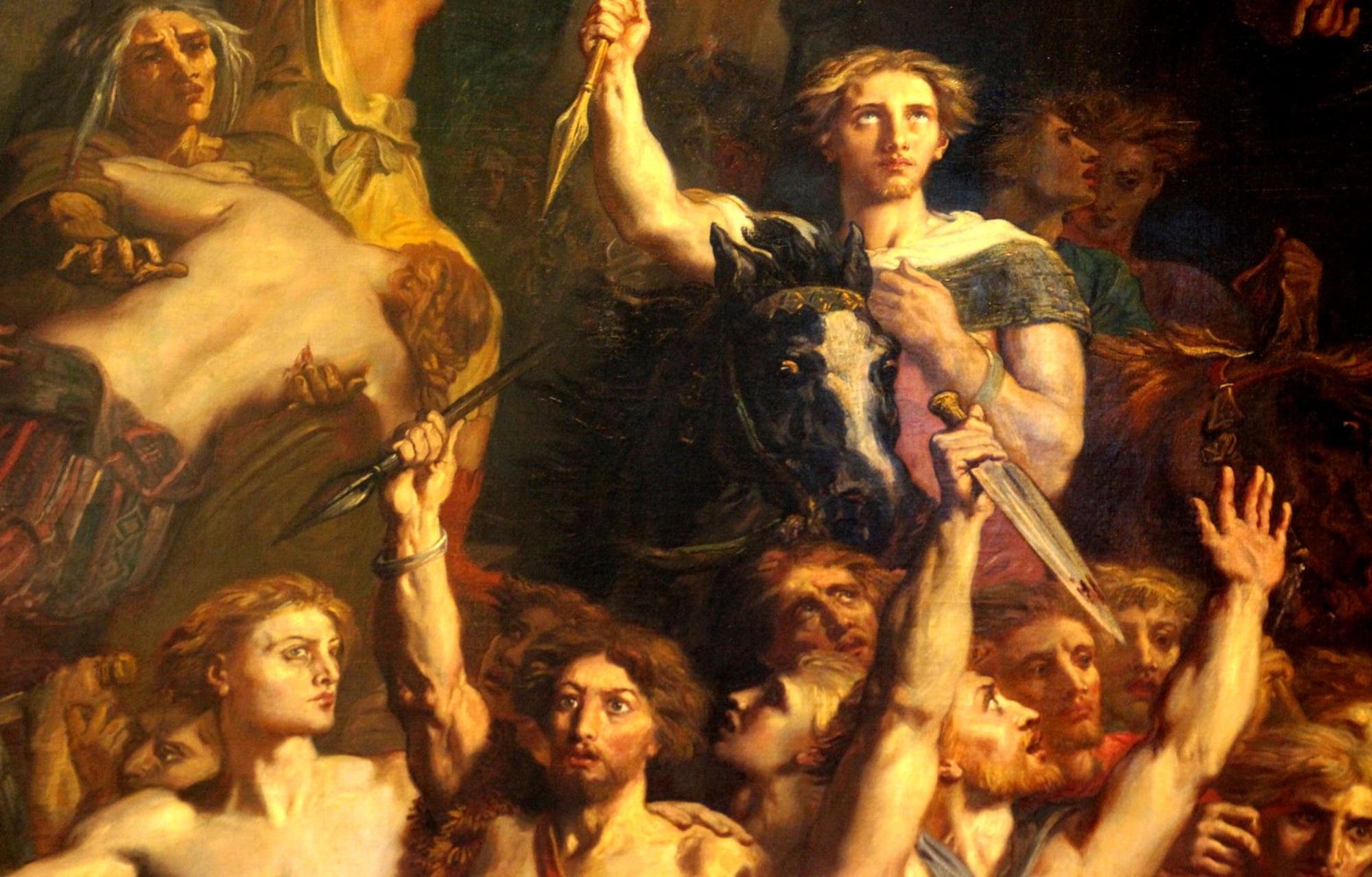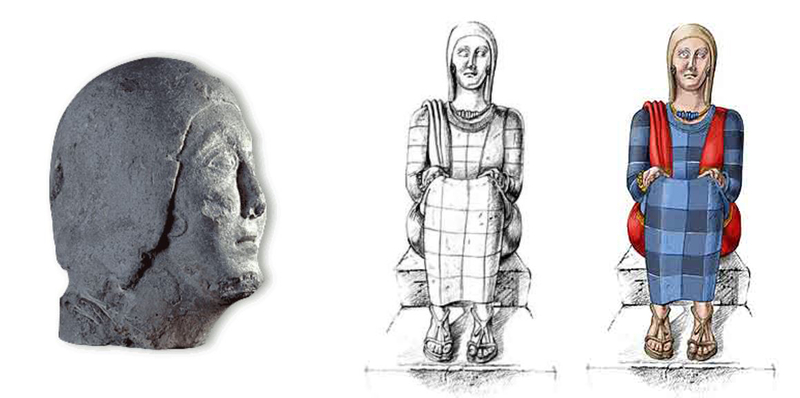- Home
- Society and power
- The role of women
Veiled female head and reconstruction of a female statue from Entremont.
Among the statuary of Entremont…
At Entremont, as well as at the contemporary settlements of Mont-Garou and Courtine in the Var region, several portraits and body elements (with draped and decorated clothing), including feet wearing sandals, reveal the presence of females among the characters accompanying the honored heros. Through analysis of statue fragments we can reconstruct seated females wearing long robes and coats. Their heads are covered with long veils that descend down their backs. They are attached to stone bases that were originally low seats. The representations of robes and coats suggest high quality tissues that were decorated with a checkered motif. This last aspect is also shown by the sculptures with incisions emphasizing the motifs and by painted colors, which have unfortunately almost completely disappeared.
…as in Celt society
This female presence in association with war heroes in an essentially virile context is in fact not surprising It corresponds to the role of females in Celtic societies described in ancient texts and more recent Irish sagas. Women were legally equal to men in the couple and in family matters. Their role was expressed in social, and sometimes even in political and military contexts.
Does not the legend of the foundation of Marseilles (c. 600 BC) tell us of Gyptis, the daughter of King Nanos, freely choosing her future husband? Diodore clearly evokes the determination of women in combat actions (V, 32) and the fragility of marriage goes along with the absence of sexual prudishness. This implication of women in Celtic society goes as far as an active participation in human sacrifices in Belgian Gaul!

